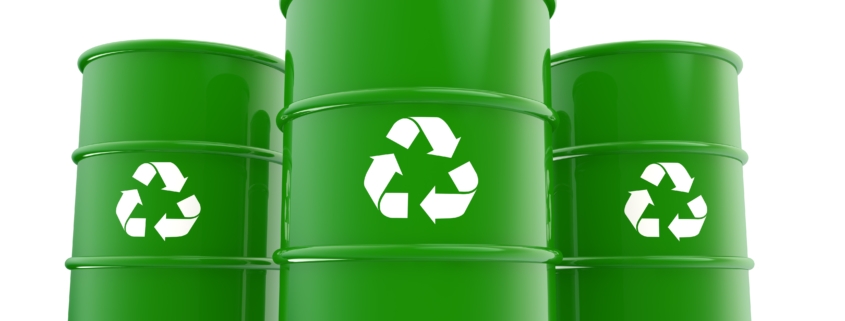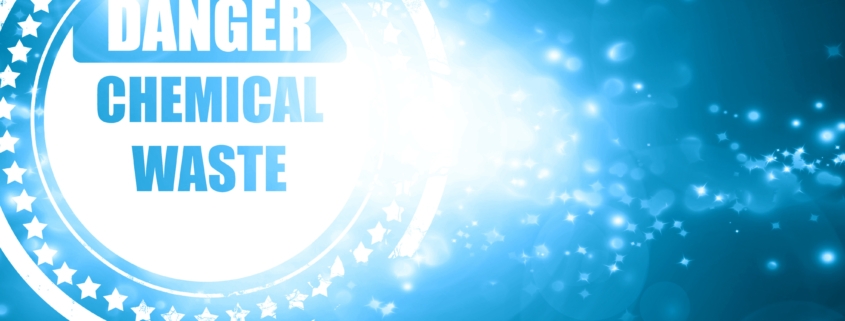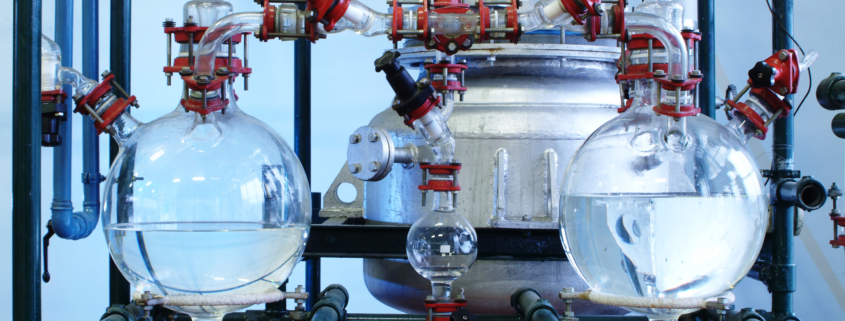Today we are providing operating advice for vapor degreasing equipment to help you save solvent and by extension, money!
In order to reduce solvent loss when starting up the operating machine, activate the cooling system, followed by checking the controls. Next, adjust solvent levels and activate heaters.
When a stable vapor blanket has been established, activate spray pumps and introduce work into the unit.
To shut down the unit, use the following procedure:
- Stop work processing and clear the machine of all work.
- Deactivate the heaters.
- Activate sump cooling coils, if available, and allow vapor blanket to collapse completely.
- Keep the condenser cooling system ON and close cover on open-top units.
FluoSolv Operatory Guidelines
In order for the vapor degreaser to be used effectively with our Fluosolv products, good work practices must be implemented.
Ventilation
Airflow across the vapor degreaser is the most common cause of extraordinary solvent losses. In no way, shape, or form should the vapor degreaser be ventilated, including the solvent product. When the system is not in use, the lid should always be kept on the degreaser.
Workload
There are two common effects that can expel solvent vapors from a cleaning system if the processing of workloads exceeds the capabilities of the vapor degreaser:
The piston effect is when a basket too large in physical size on the degreaser displaces vapor from the cleaning unit. Solvent will in turn be ejected from the machine as the mass of cleaning materials descends into the cleaning vapors. To avoid losses by this process, the area of the workload should not be greater than 75% of the horizontal cross-sectional area of the sump into which it is being introduced.
The second effect, work shock, occurs when the load of the degreaser becomes too heavy and the vapor blanket collapses. Until the vapor blanket is re-established, infiltration of air into the cleaning unit will increase solvent losses.
Work Positioning
Drag-out losses occur when baskets are not positioned correctly, causing excess parts to be removed during cleaning. Cleanout procedures must be followed for the vapor degreaser in order to prevent this scenario. Drag-out prevention is extremely essential to the effectiveness of the operating device. A good vendor should be able to document incremental operating costs and drag-out losses on a feature-by-feature basis. Additionally, they should be able to highlight specific environments (e.g., types of contamination, cycle times) which will reduce solvent losses.
Vapor Linger Time
The workload should remain in the vapor zone after the final cleaning step until its temperature equals that of the vapor zone and vapor condensation on the part stops. Work withdrawn earlier will emerge wet with solvent condensate. Insufficient dwell times are encountered most commonly in open-top units where work is manually moved into and out of the unit. Use of a programmed work transporter, like an automated hoist, can help eliminate excessive drag-out due to insufficient dwell time.
Work Scheduling
The expulsion of air from a vapor degreaser during start-up always results in carryout solvent vapor. Emissions caused by frequent activation and deactivation of the cleaning system can be minimized by deferring cleaning until all of a day’s production is compiled for processing with only one start-up of the cleaning equipment.
Changing the Cleaning Fluids in the System
Fluorinated cleaning fluid blends are extremely stable can function for extended periods of time in the vapor degreaser. Since the solvent is constantly being distilled and recycled, it remains clean and pure for an indefinite time period. While the BromothaneTM products have a requirement to perform acid acceptance tests on a weekly basis, overall the maintenance is reasonably minimal.
The real issue is the compilation of debris at the bottom of the sump. After a while the debris accumulates and the machine becomes too dirty to operate effectively. This is when a system clean-out becomes necessary. In a busy machine, this might occur twice to four times a year.
In a standard degreaser, the contamination accumulates in the boil sump. This is the first chamber in the cleaning cycle and is the location into which the dirty parts are placed when they first go into the machine. It is here where the worst contamination will aggregate. In general, make sure the rinse sump fluid will always be clear and colorless. It will be time to change the solvent in the boil sump when it accumulates a high concentration of dissolved contamination, to the point of tinting the solvent yellow or beige. Additionally, at the bottom of the boil sump will be a large collection waste. This junk will need to be removed. It’s time to clean the machine.
Cleaning a degreaser normally involves a process called a boil-down. This process simply involves distilling, or boiling, all the solvent out of the system, rather than returning it to the rinse sump and recapturing it in a pail or a drum for re-use. The heat must be turned off when the last few liters of solvent remain at the bottom of the boil sump. Any residual waste solvent and the solid contamination is cleaned out by hand and disposed of as a hazardous waste. The entire cleaning process may take a day on a large and especially dirty operating machine.
In more sophisticated machines, a recirculating pump is installed on the boil sump to refresh the solvent and to remove particulate. This will extend the periods between boil-downs. Once the machine is ready to be returned into service, the old, cleaned solvent that was recaptured during the boil-down process is dumped back into the machine.
The recovery procedure described here should be conducted on a regularly scheduled basis, typically quarterly or semi-annually.
For even more accurate thoughts and recommendations, check with the machine manufacturer.
Detailed Solvent Boil-Down Process:
The recovery procedure described here should be conducted on a regularly scheduled basis, typically quarterly or semi-annually. Be advised that the machine must be taken out of production during the boil-down process; cleaning cannot be performed while the reclamation process is underway.
Here are the steps to follow:
- When the solvent in the boil sump is too dirty for normal operations to continue, turn the ultrasonics off. Empty the condensate (and the “rinse” sump in a multi-chamber system) into a clean, solvent-safe container.
- Continue to operate the boil sump. As the dirty solvent boils in the boil sump the solvent vapors will be captured and distilled by the cooling coils. The clean, nearly-pure distillate should be reclaimed into the solvent-safe container.
- Gradually the solvent and contamination remaining in the boil sump will concentrate and become viscous and syrupy.
- Before the residues become too thick, the high-temperature safety controls in the boil sump will detect the rising temperature and shut off the heaters. At this point, about 50% of the material in the sump will be solvent.
- Manually raise the boil sump temperature by another ten degrees and continue to boil the system until the safety controls shut off the system again.
- The “bottoms” are collected for disposal by draining the boil sump. The boil sump should then be cleaned with wipes and elbow grease. Wear gloves and take precautions to avoid exposures to high concentrations of the vapors.
- Once the boil sump is clean and dry, close all the drain valves and add fresh solvent to the clean solvent collected during the boil-down. Add enough solvent that the normal operational levels are re-established.
- Return the temperature controls on the boil sump back to their original and correct settings. If the facility has collected contaminated cleaning fluids over a period of time and would like to reclaim it all at once, this procedure can be extended simply by adding more of the dirty solvent to the boiling chamber during the boil down process.
Solvent Handling:
Crucial tips for minimizing solvent loss during normal operation of the machine:
- Ideally, the solvent should be pumped into the degreaser through a liquid-submerged fill connection.
- Make-up solvent (topping off the machine to replace lost solvent) should be added to the rinse sump.
- Cold solvent should not be added to operating degreaser, for it can collapse the vapor blanket.
- The addition of solvent to an open-top degreaser by pouring from drums or buckets should be avoided. The turbulence of such pouring destabilizes the vapor/air interface.
- Drums should be stored with the bung end up to eliminate the possibility of a major spillage of solvent through a leaky bung. Drums filled with solvent and not in current usage should have tightly sealed lids. Take great care when moving drums of solvent. Do not pressurize the drums of solvent in an attempt to expedite unloading.
The cooling coil defrost setting should be set to periodically de-ice the coils. The vapor-degreaser’s boiling temperature setting should be increased by 10 to 15 °C when separate distillation for reclaiming spent solvent, due to the elevated boiling point of the contaminated solvent. The refrigeration/chiller should be set to its lowest temperature possible for best distillation efficiency. This is caused by an elevated boiling point of the contaminated solvent.
End of Lesson!
We hope these tips will help you reduce your solvent losses and save you money. If you have further questions about vapor degreasing or would like to know about the solvent products we sell for use with vapor degreasing, give us a call at 800-563-1305 or email us at vapordegreasing@ecolink.com





